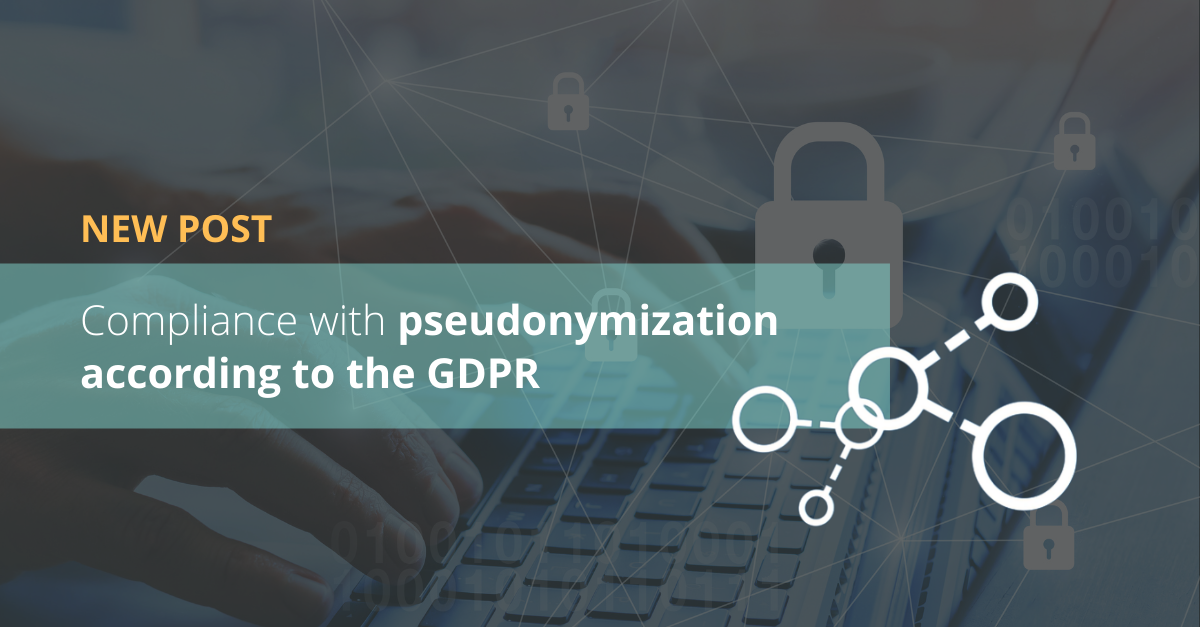The advances and expansion of new technology present a new challenge: that of managing their evolution and, at the same time, ensuring the privacy of the people who use them. And it is for the latter that data protection becomes vitally important.
This protection refers to the care and limitation in the treatment of all information that serves as an identifier of a natural person through certain technical measures, pseudonymization being one of those established by the General Data Protection Regulation (GDPR).
Definition of pseudonymization
Pseudonymization can be defined as the procedure applied to data records in order to replace various identifiers (identification fields) with pseudonyms (fictitious identifiers), while separately safeguarding the link between the data and the subject of the data. Therefore, pseudonymizing personal data does not imply anonymity.
In fact, this processing method extracts, encrypts or hides a kind of link in the data chain, so that the information cannot be attributed to the person concerned. But this link, in reality an identifier, is safeguarded to allow the possible reversal of the procedure.
When pseudonymized data is produced, according to the GDPR, two sets of information are obtained:
- The processed information that is not attributable to the person concerned.
- The additional information that contains the removed link to the data chain and that allows identification of the data.
Pseudonymization of personal data in the GDPR
For this information that is generated, the GDPR defines pseudonymization as the processing of personal data in order to render them unidentifiable without the use of additional information.
That is, if necessary, the GDPR pseudonymization allows the data to be identifiable again, but with the following condition: the additional information provided by the reversal must be completely inaccessible to those who do not have authorization.
Consequently, if you have the key, the identification of the person can be possible. Due to this reversal process, the GDPR considers pseudonymized data to still be personal data.
How pseudonymization can be used in the context of the GDPR
Although the regulation mentions pseudonymization as one of the data protection processes, its use should depend on the circumstances, the technology used, or even the level of risk involved.
Pseudonymization can be applied through techniques such as encryption with a secret key, in which identification fields are replaced with codes, making the data unreadable. Thus, only those in possession of the system key will be able to obtain the original private data.
GDPR pseudonymization can be used in various fields, such as:
- Scientific or medical research, for the processing of statistical data without linking names, addresses and other personal identification data.
- Customer registration or marketing research, to preserve consumer privacy by substituting the customer's name with a code.
It is important that any pseudonymization practice be automated. Data management involves a certain level of complexity, so standardization is key, both to ensure data protection, in accordance with the GDPR, and for the sustainability of the company.
You might be interested in: How to protect your data with data masking
Anonymization vs. pseudonymization
As expressed in the GDPR, anonymization and pseudonymization guarantee individuals' privacy through the processing of data, although the difference basically lies in the possibility of reversing the procedure, or not, as well as in data dissociation, in the type of data generated, and in the GDPR specifications.
- In data dissociation:
- Anonymization implies complete and irreversible dissociation of the data to the data subject. Therefore, there is no way to associate identity with the personal data processed.
- In GDPR pseudonymization, it is possible, by storing and using the additional information, to reassociate the data and identify the subject.
- In the type of data generated:
- Anonymization generates anonymous data.
- In pseudonymization, the data are identifiable, although in an indirect way, since, by using keys, identity can be reassociated.
- In the GDPR specifications:
- Anonymization is not regulated by the GDPR because, by producing anonymous information, data protection principles do not apply.
- Pseudonymization is regulated by the GDPR because it is a data processing method in which the natural person can be identified with the use of additional information.
Related content: Best data anonymization tools and techniques
Choose a partner to comply with the GDPR pseudonymization
Having technology for pseudonymization at your disposal in data collecting helps to safeguard the intrinsic value that data may have for the company, study or organization; and, at the same time, to facilitate compliance with the GDPR.
Nowadays, the amount of data flowing through the various departments of an organization is enormous. It is, therefore, essential to have a partner who offers automated and customized solutions for data protection processing through pseudonymization.
Having a trusted company on your side that works with GDPR pseudonymization and anonymization is the most reliable way to reduce the risk of data security breaches and ensure the protection of private information.
At Pangeanic, we can offer you solutions with the GDPR pseudonymization method, ensuring the reliability, integrity and privacy of the data, by means of efficient technology that guarantees the security of the process.




